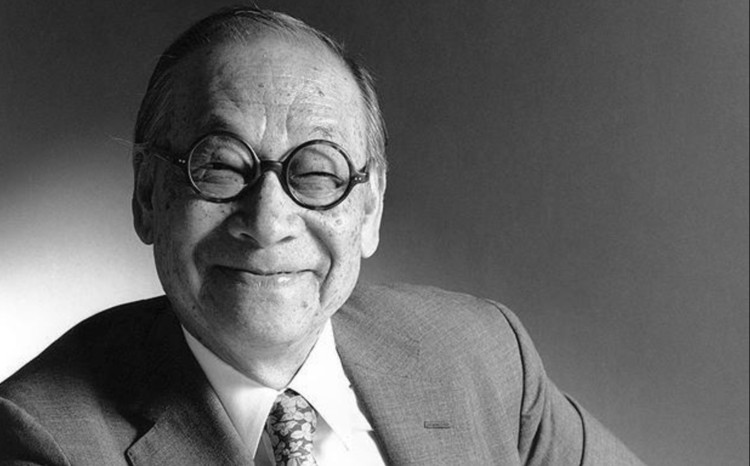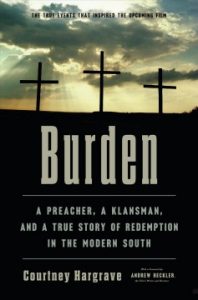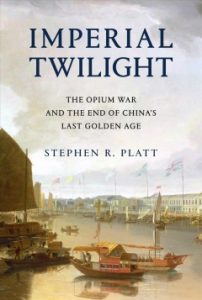And today, we mark with a heavy heart the passing of I.M. Pei, internationally-renowned architect and MIT alum, at the venerable age of 102.

Ieoh Ming Pei was born in Guangzhou China, to a family that could trace their lineage to the Ming Dynasty, and made their fortune in medicinal herbs. He was raised in Hong Kong and Shanghai, and despite being unable to speak English, he decided to matriculate to the University of Pennsylvania to study architecture. UPenn, however, was a program that remained focused on the Beaux-Arts period of architecture (think 18th and 19th century Parisian architecture), and Pei wanted something more modern. He transferred to MIT, graduating in 1940. He enrolled in Harvard School of Design for a graduate degree, but less than a month after starting the program, he suspended his work in order to join the National Defense Research Committee, which coordinated scientific research into US weapons technology during World War II. Pei’s background in architecture made him a valuable asset to the program. As he was told by a fellow committee member, “If you know how to build you should also know how to destroy.” Following the war, Pei returned to Harvard, and worked with Walter Gropius and Marcel Breuer, both leaders of the Bauhaus philosophy of architecture (a modernist movement that was influenced by arts and crafts design), which had been banned by the Nazi government.
Soon after the end of the Second World War, Pei’s career took off, and he was inundated with requests for projects and buildings. One of the most important of his career was the John F. Kennedy library in Boston. Although the design itself had to be modified due to location and planning trouble, the building launched Pei into the architectural stratosphere. He would go on to design the Hancock Tower in Boston, as well as the glass pyramid outside the Louvre in Paris. For more on Pei’s remarkable life, architectural ethos, and design history check out this fabulous selection of books available through the NOBLE network, or check with your favorite Public Services Staff to learn more. You can also read The New York Times’ article on Pei’s Most Important Buildings, as well as the BBC’s coverage, which includes links to articles that highlight Pei’s long and storied career. We join the world in acknowledging the work and life of this remarkable and charming man, and rejoice in the memories his building evoke.
And now, on to the books!

A Sin by Any Other Name: Reckoning with Racism and the Heritage of the South: The Reverend Robert W. Lee, descendant of Confederate General Robert E. Lee, was a little-known pastor at a small church in North Carolina until the Charlottesville protests, when he went public with his denunciation of white supremacy in a captivating speech at the MTV Video Music Awards. Support poured in from around the country, but so did threats of violence from people who opposed the Reverend’s message. In this riveting memoir, he narrates what it was like growing up as a Lee in the South, an experience that was colored by the world of the white Christian majority. He describes the widespread nostalgia for the Lost Cause and his gradual awakening to the unspoken assumptions of white supremacy which had, almost without him knowing it, distorted his values and even his Christian faith. In particular, Lee examines how many white Christians continue to be complicit in a culture of racism and injustice, and how after leaving his pulpit, he was welcomed into a growing movement of activists all across the South who are charting a new course for the region. This powerful memoir, headed by a foreword by Rev. Dr. Bernice A. King, is a timely exploration of American culture and religion that Publisher’s Weekly called a “revealing memoir . . . open minded readers will appreciate Lee’s perspective on race in America as well as his story of working to overcome division, bigotry, and his own family’s fraught history.”
City of Jasmine: German author Olga Grjasnowa’s latest novel is one that doesn’t turn away from the heartbreak and horror of war, but also manages to focus on the light and humanity that can be present alongside it. When Hammoudi, a young surgeon based in Paris, returns to Syria to renew his passport, he only expects to stay there a few days. But the authorities refuse to let him leave and Hammoudi finds himself caught up in the fight against the regime. Meanwhile, budding actress Amal has also joined the protests against the government and her own father, by whom she feels betrayed. Realising that they will never again be safe in their homeland, Amal and her boyfriend Youssef decide to flee to Europe in a desperate bid to survive. But the path to safety brings its own risks, and Amal and Youssef once again narrowly escape death when their overcrowded ship sinks. Eventually they reach Germany, but soon discover that in this new life – where they are perceived as nothing but refugees – their struggle is far from over. Grjasnowa’s books have received rave reviews across Europe, and Library Journal noted that she “provides a close-as-skin understanding of what it’s like to suffer bombardment, torture, and dislocation while remaining human and hopeful… Highly recommended.”
Exhalation: Stories: Fans of the blockbuster film Arrival, which was based on one of Ted Chiang’s short stories, will be delighted to hear that a new collection of his tales have arrived, all of which focus on humanity’s longest and deepest questions through fantasy, science fiction, and a rich love of language. In “The Merchant and the Alchemist’s Gate,” a portal through time forces a fabric seller in ancient Baghdad to grapple with past mistakes and second chances. In “Exhalation,” an alien scientist makes a shocking discovery with ramifications that are literally universal. In “Anxiety Is the Dizziness of Freedom,” the ability to glimpse into alternate universes necessitates a radically new examination of the concepts of choice and free will. These stories span Chiang’s career, and earned a rave review from Joyce Carol Oates in the New Yorker, where she wrote “Chiang has explored conventional tropes of science fiction in highly unconventional ways. . . . Individual sentences possess the windowpane transparency that George Orwell advocated as a prose ideal. . . . It is both a surprise and a relief to encounter fiction that explores counterfactual worlds like these with . . . ardor and earnestness. . . . Human curiosity, for Chiang, is a nearly divine engine of progress.”
Game of Bones: Carolyn Haines’ latest mystery featuring southern private investigator Sarah Booth Delaney has a very timely title, but her humor and flair for small-town settings set this series well apart from the current HBO show. Dr. Frank Hafner is an archeologist working on excavating a new-found Native American temple site in the Mississippi Delta. He’s also too handsome for his own good, and a bit of a flirt. Oddly enough, it’s the first quality that gets him in trouble when he discovers the ritualistic murder of one of his archeological crew. When Coleman Peters, Sheriff and Sarah Booth’s boyfriend, takes Dr. Hafner in for questioning in the murder, the accused doctor hires Sarah Booth to clear his name. Soon, Sarah Booth has uncovered a number of possible suspects, but she can’t narrow them down fast enough to stem the continuing violence that seems to trace back to Dr. Hafner’s dig. When Peter Deerstalker, a member of the Tunica tribe, mentions a curse, it doesn’t seem so far-fetched–especially when a young graduate student on the site claims someone on the site is searching for something much more precious than ancient pottery. Something supernatural seems to be lurking in the Mississippi Delta, and it’s up to Sarah to determine the truth of the matter in this mystery that earned high praise from Publisher’s Weekly, who noted that “Distinctive characters and an atmospheric setting elevate this paranormal cozy. Series fans and newcomers alike will be satisfied.”
The Reckoning: Fans of Icelandic noir most likely know about chilling note predicting the deaths of six people is found in a school’s time capsule, ten years after it was buried. But surely, if a thirteen-year-old wrote it, it can’t be a real threat–can it? Detective Huldar suspects he’s been given the investigation simply to keep him away from real police work. He turns to psychologist Freyja to help understand the child who hid the message. Soon, however, they find themselves at the heart of another shocking case. For the discovery of the letter coincides with a string of macabre events: body parts found in a garden, followed by the murder of the man who owned the house. His initials are BT, one of the names on the note. Huldar and Freyja must race to identify the writer, the victims and the murderer, before the rest of the targets are killed. Booklist gave this super novel a glowing review, praising how “Sigurdardottir offsets sharp procedural elements and gruesome crimes with masterful character development and social commentary, creating a riveting, affecting thriller.”
Until next week, Beloved Patrons–happy reading!
















 Set in the closing days of World War I, the book follows Paul Peachy, a first-generation American, Minneapolis railway employee and amateur actor, who decides to escape his lackluster life by enlisting in the American Army. There, he meets other children of immigrants who are all eager to serve as American soldiers, and begins to dream of the adventures and escapades they’ll have in Europe. War, however, is nothing like Peachy or his friends imagined, and it isn’t long at all before he is captured by the Germans. With nothing left to lose, Peachy–who speaks fluent German–decides to impersonate the German Army’s most famous spy. Because ‘Harry Stroller’ is more myth than man, the deception seems to work. Peachy is treated to a hero’s welcome, wined, dined, and provided with anything he could wish for–including women. And it is then that Annie Breton, a young and strikingly beautiful courtesan, comes into Peachy live, and changes everything.
Set in the closing days of World War I, the book follows Paul Peachy, a first-generation American, Minneapolis railway employee and amateur actor, who decides to escape his lackluster life by enlisting in the American Army. There, he meets other children of immigrants who are all eager to serve as American soldiers, and begins to dream of the adventures and escapades they’ll have in Europe. War, however, is nothing like Peachy or his friends imagined, and it isn’t long at all before he is captured by the Germans. With nothing left to lose, Peachy–who speaks fluent German–decides to impersonate the German Army’s most famous spy. Because ‘Harry Stroller’ is more myth than man, the deception seems to work. Peachy is treated to a hero’s welcome, wined, dined, and provided with anything he could wish for–including women. And it is then that Annie Breton, a young and strikingly beautiful courtesan, comes into Peachy live, and changes everything.